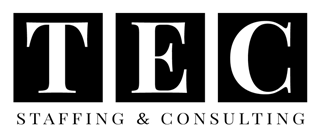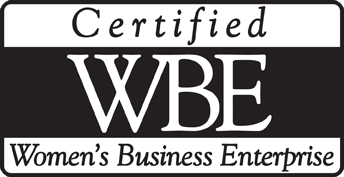Employee Retention: Proven Strategies for 2025 and Beyond
Strategies That Help Employees Stay
The modern workplace presents us with a reality check: organizational excellence requires more than gaudy compensation packages. Organizations are beginning to see that creating workplaces where skilled professionals feel appreciated, challenged by substantial work, and build genuine human connections is the true key to talent lock-in. Visionary organizations are pushing back at this challenge through the development of high-performance teams whose exclusive charge is employee retention and by leveraging creative programs.
Let's unmask the best practices top companies have undertaken to acquire and keep their hard-to-attract-and-recruit high performers, such as individualized plans for growth and development and power-packed recognition plans.
Onboarding Excellence: The Foundation of Retention
Successful retention begins even prior to the employee's first day. Organizations with structured, complete onboarding programs have averaged 62% higher employee retention and as much as 54% higher productivity from new hires. Those initial 90 days are precious in shaping an employee's experience, setting clear expectations, and building long-term relationships in the company. A successful onboarding plan consists of a series of critical components:
Day one role documentation with detailed performance metrics- Individual role alignment to organizational needs and employee career objectives
- Organizational culture induction by story, experiential learning, and community building
- Relationship building through strategically timed meet-and-greets with multi-departmental stakeholders
- Strategic 30, 60, and 90-day check-ins for alignment, issue resolution, and celebration of early success
By integrating new employees into committed peer mentors and placing them on high-profile assignments right away, companies give workers a feeling of direction and belonging. The model flips the onboarding process on its head from a process imperative to a successful retention program that sets the stage for long-term commitment and engagement.
Research shows that staff who receive an excellent onboarding experience are 69% likely to remain in the company for three years and beyond. This is proof of how investing initially yields staggering dividends in terms of employee retention as well as company performance.
Growth Opportunities: Investing in Future Leaders
Organizations that invest strategically in the personal growth of individuals build the types of cultures in which A-player talent will naturally develop and remain engaged for the long term. Forward-thinking companies build integrated development cultures with individualized paths to progress that fully leverage structured mentoring and deliberate executive shadowing experiences. These organizations significantly invest in technical and interpersonal competencies through highly engineered programs of learning and offer high-profile cross-functional leadership experiences that build skills and broaden organizational knowledge across a broad array of business functions.
Career path development is a shared endeavor between team members and leadership, carefully mapping organizational objectives to professional objectives. Quarterly in-depth career planning sessions, fully funded industry-recognized certification programs, and highly evolved internal mobility programs demonstrate an unwavering organizational commitment to long-term professional development. This holistic strategy to talent development delivers impressive dividends in the form of dramatically
improved retention rates, higher engagement scores, and faster innovation cycles.
Engagement Tactics: Building Lasting Connections
Employee engagement is the cornerstone of effective retention. Top-performing businesses establish a substantial dialogue with formal weekly one-on-ones between managers and employees, supplemented by quarterly town halls where executives share information and respond to questions directly.
Well-funded Employee Resource Groups create communities of belonging where professionals of similar backgrounds share a commonality, regularly being given specific budgets for development initiatives and cultural celebrations. In-depth feedback mechanisms demonstrate commitment by visibly implementing employees' recommendations.
Effective recognition initiatives reward team and individual achievements, understanding that accomplishment is role-specific—from customer satisfaction targets to innovation milestones. Structured cross-generational mentoring tears down silos while creating effective knowledge transfer, with formal programs delivering 25% more retention of both mentors and mentees.
Compensation Strategy: Beyond the Base Salary
While competitive pay remains the foundation, modern compensation plans must be holistic. Best-practice firms conduct quarterly market benchmarking to ensure salary ranges remain competitive, usually at the 75th percentile for critical roles and high performers.
These companies offer customized benefits packages that allow employees to steer their total rewards toward whatever matters most to them. Whether it be higher retirement contributions, additional vacation time, or higher health coverage. The personalization meets the diverse needs of a multi-generational workforce while maximizing perceived value.
Reward performance systems value higher efforts in the form of open metrics and timely feedback. Best-performing programs connect a combination of instant recognition (in the form of spot bonuses), ongoing incentives (in the form of equity grants or retention bonuses), and advancement to proven excellence. Innovative family-friendly policies extend far beyond standard parental leave to encompass elder care support, child care support, and flexible scheduling plans. Those companies that have implemented comprehensive family-care programs with return guarantees have experienced astronomical turnover reductions. Leaders in their industries like Patagonia and Salesforce show how serving employees' whole lives yields concrete retention dividends.
Implementation and Impact
Successful retention strategies need to be rolled out in phases and periodically evaluated. Organizations need to establish baseline measurements (current level of turnover, engagement levels, patterns of exit interviews) before beginning intensified efforts at phased rollouts. Measurement of impact through quantitative metrics (retention rates, program take-up rates, productivity measures) and qualitative feedback (sentiment analysis, manager feedback, stay interviews) offers an integrated framework for assessment. The data-driven approach allows real-time calibration against actual outcomes rather than conjecture, yielding an improvement virtuous cycle.
Contact TEC Staffing Services to build and maintain high-performing teams that drive sustainable growth in Berkshire County. Our expertise helps you implement proven retention strategies tailored to your business needs.






